HUE
The ancient emperor capital of Vietnam
Located on the banks of the Perfume River, and with a long and diverse history, Hue and the surrondings have many stories to tell. The ancient tombs of the emperors, the Tu Hieu Pagoda, and the Imperial Citadel – along with maybe the best food in the country – Hue should not be missed on your trip through Vietnam.
Hue`s charm is not obvious, if you compare it to the neighbouring city Hoi An. But take your time to discover the hidden gems of the city, and the destination will offer you unique and authentic experiences. We have gathered some of the “must sees” while in Hue, adding highlight to your your visit to Vietnam and giving it an extra dimension.
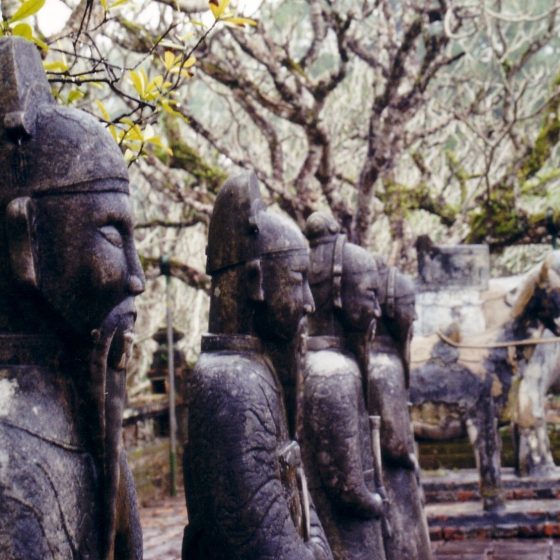
The citadel and the emperors
The beautiful and historic part of the city is the citadel. It is somewhat hidden away and has kept the old part of the town authentic. The forbidden city, a remarkable cluster of buildings that reflects Vietnam’s history over the past two hundred years, is the heart of the citadel. The citadel was built by the Nguyen kings in the beginning of the 19th century. It is inspired by both French and Chinese arcitecture. The last emperor abdicated in 1945, and the citadel suffered from the war and also natures decay. But today most of the buildings are renovated, making the visit worth while.
After absorbing the energy and impressions of Vietnamese history, take a stroll in the neighborhood. Garden houses have been converted into leafy coffee shops and serene lakes are hiding around every corner. If you choose to explore the area on foot, be aware that the citadel is big, and it will take some time covering the whole ground. The citadel is a great place to hop on a bicycle and cycle around to see what you discover, as the citadel and surrondings are flat. If you prefer being more relaxed on your adventure in the citadel, a motorbike or cyclo could be a good option.
The tombs of the ancient emperors
Several kilometers from the citadel, the tombs of the Nguyen kings that once held Hue as their capital can be foundt. Each tomb reflects the kings politics and personality in their arcitecture and form. And therefore each one is different. Seven royal tombs, that gives a perspective of Vietnams history.
Gia Long tomb is the oldest, the least visited, and the most atmospheric. Minh Mang tomb is the grandest, reflecting the strength and power of his empire. Thieu Tri is like a minature version of Minh Mang’s tomb, but only sees a fraction of the visitors. Unlike the tombs of Minh Mang and Thieu Tri, Tu Duc blends harmoniously with nature. If you’re short on time, Duc Duc tomb is the only one that you’ll find in the city. Dong Khanh tomb is orderly and well-preserved with great views. And the tomb of Khai Dinh, the penultimate king of Vietnam before the communist takeover, is the weirdest of them all. It fuses – with an arguable degree of success – Vietnamese, Chinese, French, and Cambodian styles with a big grey structure that stretches up the side of a mountain.
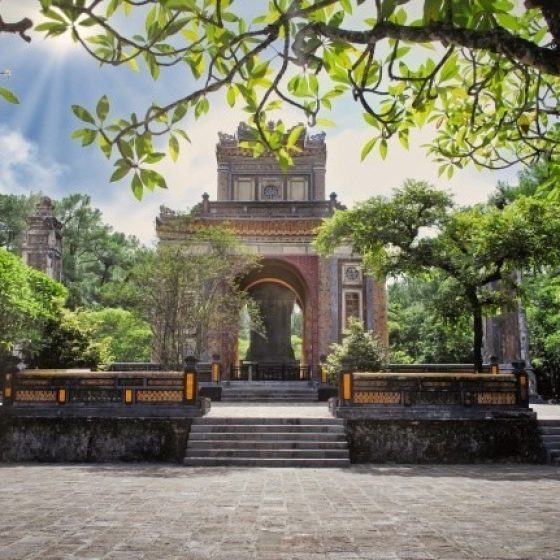
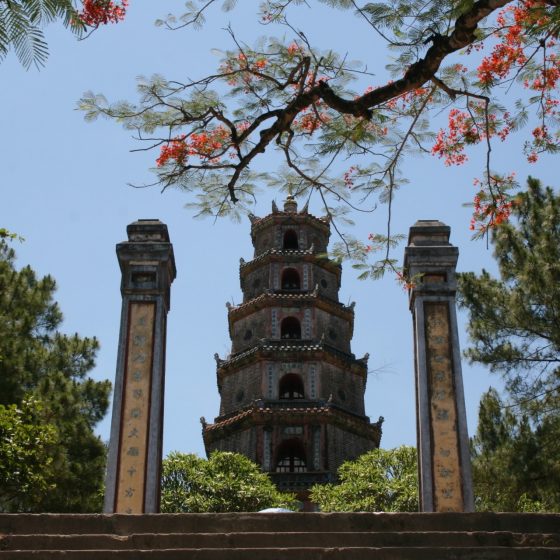
Thien Mu pagoda
Overlooking the Perfume river and with the characteristc shape of the octagonal tower, it is a well known symbol of the city of Hue. Still well preserved, the seven floors each represents one of Buddas reincarnations. Six statues of patron spirits guards the pagoda and a golden statue of Buddha. It also contains a huge bell weighing 2052 kg, and was cast in 1701.
A great way to visit Thien Mu pagoda is by boat. Take in the scenery in a calm and quiet way on the river, and relax before you start exploring the famous Vietnamese landmark. If you go on a guided tour, you will have the possibility to hear about the religious beliefs of the locals, all while you soak up the impressions and the beautiful views of the area.
You can also reach the pagoda by bike, and if you go on your own, and would like to have some quiet time there, be sure to pass by in the morning, before the larger groups arrive.
Savor the taste of Hue
Many says that Hue has the best food in Vietnam! That is quite a statement, as there are so many well known and tasteful dishes all through Vietnam. But one of the main reasons Hue being so famous for its food is the royal legacy in the city. The Nguyen kings were a demanding dynasty, and special dishes were served just for them, do distinguish them from the common Vietnamese. But the recipies could not be kept secret, so now everyone can enjoy the tasteful dishes from this region.
Another reason why Hue`s cuisine is so well known is that the locals are dedicated to tradition. Meaning they do their best to keep the dishes authentic, and not being influenced from others, passing the recipies down from generation to generation.
In addition to this, Hue has a remarkable position in Vietnamese Buddhism. And in places where Buddishm is important, there are often monastaries and monks, and restaurants often serve vegan food in such areas. Hue is probably the best place for a vegetarian in Vietnam!
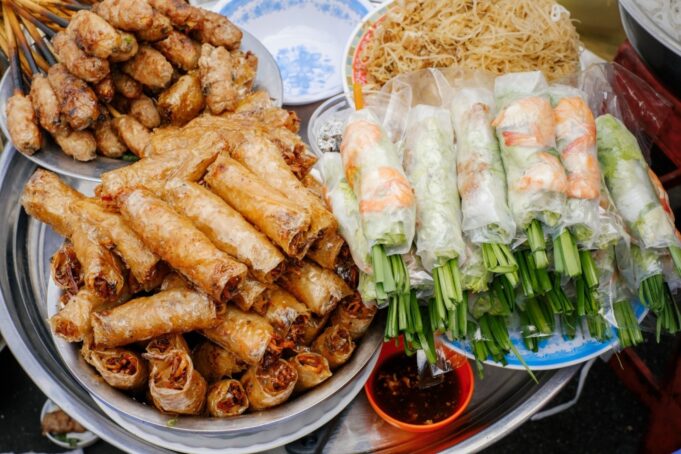
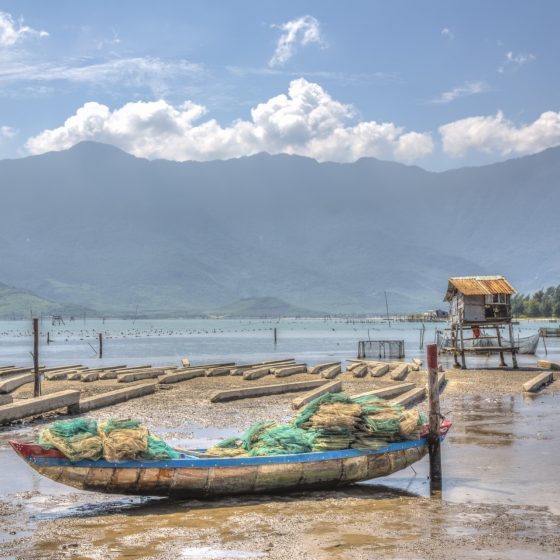
In the countryside
While in Hue you should make time to get out of the city and take a tour in the countryside. It is a beautiful landscape just waiting for you to explore it. As in many parts of Vietnam, the green and lushous rice paddies catch your eye at once. Tam Giang lagoon is well worth a visit, you can also explore it by kaya. The mountainous Bach Ma National Park an hour from Hue, offers hiking trails to waterfalls. Or explore the countryside and the nearby villages at your own pace, with a bicycle.

